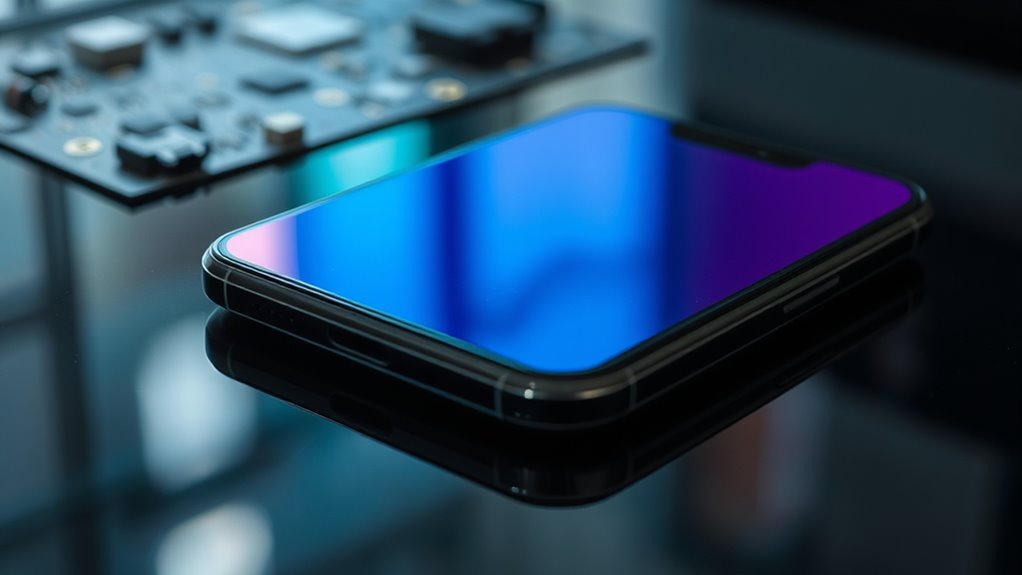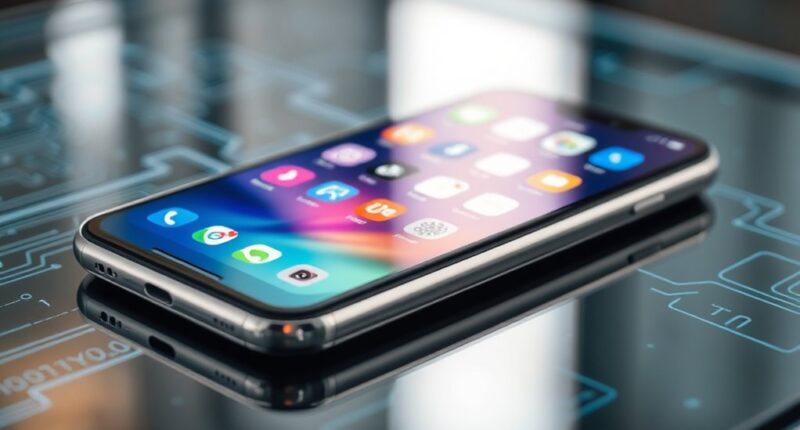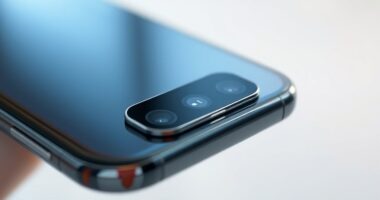Understanding the math behind smartphone battery health reveals that lowering your charging voltage, around 3.92V per cell, can double your battery’s lifespan compared to full 4.2V charges. Keeping your battery between 20% and 80% reduces stress, slowing capacity loss. Every 0.10V decrease considerably extends cycle life, while full charges and deep discharges speed up degradation. Mastering these simple calculations helps you make smarter charging choices—if you continue exploring, you’ll discover even more ways to maximize your battery’s longevity.
Key Takeaways
- Reducing charging voltage below 4.2V per cell, around 3.92V, significantly doubles battery cycle life.
- Keeping charge levels between 20% and 80% minimizes stress and prolongs battery health.
- Deep discharges and full 100% charges accelerate capacity degradation over time.
- Mathematical formulas estimate battery lifespan based on current charge percentage, guiding smarter charging habits.
- Balancing capacity and longevity involves adjusting charge voltage to optimize both energy and battery health.

Understanding the math behind your smartphone’s battery health reveals how small adjustments in charging habits can considerably extend its lifespan. Lithium-ion batteries, which power most smartphones, degrade faster when subjected to certain voltage levels and discharge patterns. By grasping the underlying principles, you can make smarter decisions that preserve battery capacity over time. For example, keeping your charge level between 20% and 80% minimizes stress on battery cells, reducing wear caused by deep discharges or full charges to 100%. Repeatedly charging to full or letting the battery drain completely accelerates capacity loss, often degrading it by around 70% after just a few hundred cycles.
Lowering the peak charge voltage makes a significant difference. Every 0.10V reduction below 4.2V per cell roughly doubles the cycle life, meaning your battery can endure twice as many charge-discharge cycles before losing substantial capacity. For instance, setting your device to stop charging at about 3.92V per cell instead of 4.2V can extend the battery’s useful life, though at the cost of some storage capacity—typically around 65% of full. This tradeoff between capacity and longevity is key: charging at lower voltages prolongs the battery’s health, while charging at full voltage maximizes available energy per cycle but shortens overall lifespan.
Mathematically, you can predict your battery’s remaining capacity or lifespan with simple formulas. For example, multiplying the current charge percentage by two, then adding five, gives an estimate of remaining useful cycles or capacity. These quick calculations help you understand how your current charging habits impact overall battery health and guide you to optimize usage. As the battery charges, the math adjusts dynamically, providing real-time insights into how much longer your battery will last or when to unplug it for best longevity. Understanding these principles can help you make informed choices to maximize battery life and develop better charging strategies.
Frequently Asked Questions
How Does Temperature Affect Battery Lifespan?
You wonder how temperature impacts your battery’s lifespan. When it’s too hot, heat accelerates chemical reactions inside, causing irreversible damage like capacity loss and faster degradation. Cold temperatures increase internal resistance and reduce power output, also harming the battery. To extend its lifespan, avoid exposing your phone to extreme heat or cold, remove cases during charging, and use thermal management features. Proper care helps your battery stay healthy longer.
Can Specific Apps Drain Battery Faster Than Others?
Ever wonder why some apps seem to drain your battery faster? You might be surprised to find that apps like Google Meet, Snapchat, and YouTube consume more power because of their constant background activity, high data usage, or GPS reliance. These apps push your battery to its limit, leaving you with less juice for the day. Choosing alternatives or adjusting settings can help you keep your battery alive longer.
Is It Better to Fully Charge or Partially Charge the Battery?
You might wonder if fully charging or partially charging your battery is better. For ideal longevity, it’s best to keep your battery between 20% and 80%. Partial charges within this range generate less heat and reduce chemical stress, helping your battery last longer. Avoid consistently charging to 100% or letting it drain completely, as these practices accelerate wear. Instead, charge when it drops to around 20-30% and unplug near 80-90%.
How Do Different Charging Speeds Impact Battery Health?
You wonder how charging speeds affect your battery’s health. Fast charging delivers high current quickly, generating heat that speeds up chemical degradation inside the battery, which can shorten its lifespan over time. Slow charging produces less heat, helping preserve battery chemistry and prolonging its life. While quick top-ups are convenient, relying on slow charging more often keeps your battery healthier longer, especially if you avoid excessive heat buildup during charging.
What Is the Ideal Battery Percentage to Keep for Longevity?
You’ve got the power to make your battery last forever—well, almost! The ideal range for longevity is between 20% and 80%. Keeping your phone within this zone reduces stress and slows capacity loss. Avoid charging to 100% or letting it drop below 20%, as these extremes accelerate wear. Stick to this simple rule, and your battery will stay healthier, longer—like a trusty sidekick that never lets you down!
Conclusion
Think of your smartphone battery as a delicate garden that needs regular care. By understanding the hidden math behind its health, you can tend to it wisely—avoiding overcharges, keeping it cool, and charging smartly. With these simple steps, you’re the gardener nurturing a vibrant, long-lasting bloom. Keep these habits in mind, and your battery will flourish, ready to power your day like a steady heartbeat in the rhythm of your life.









